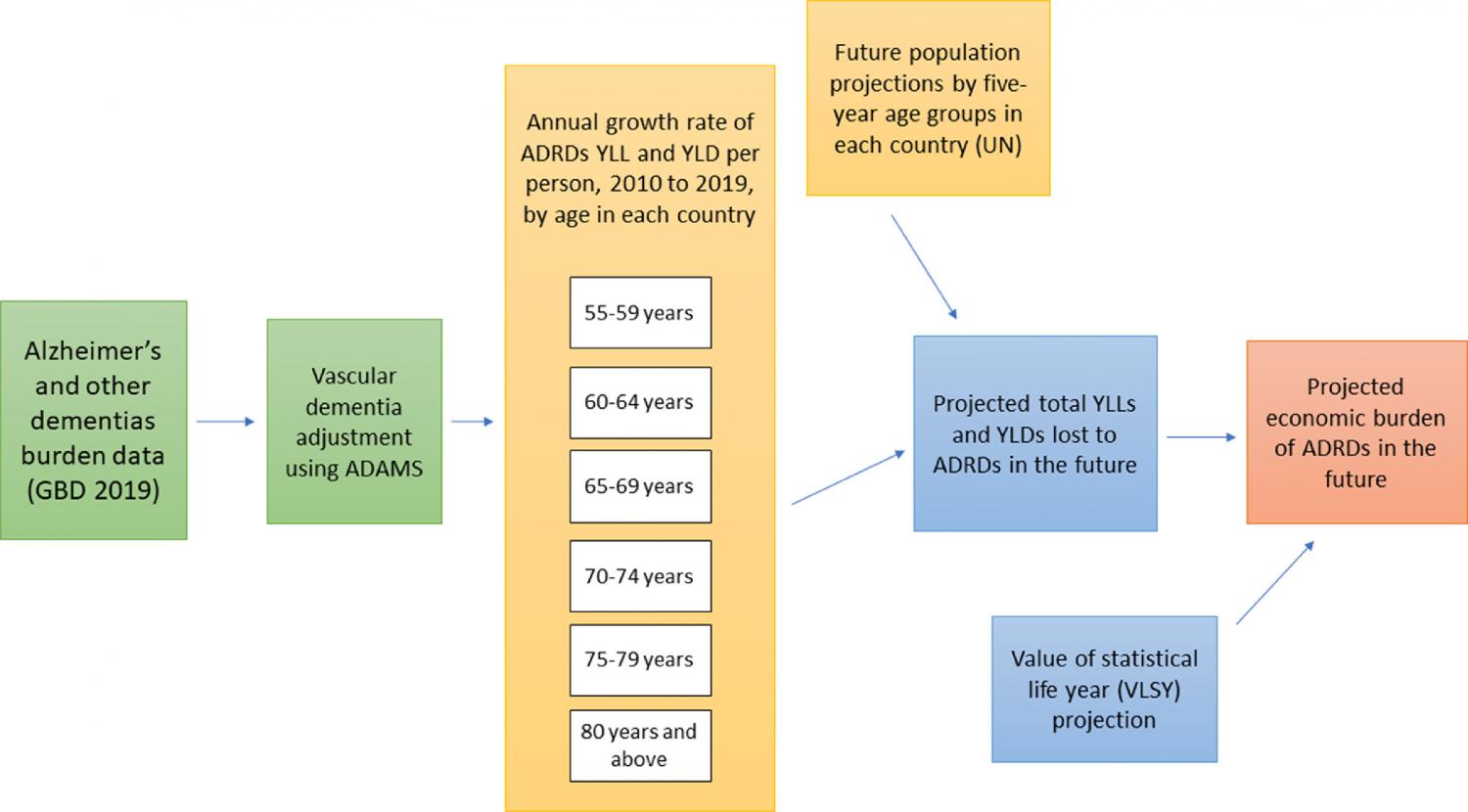
Summary
Background
The burden of Alzheimer's disease and related dementias (ADRDs) is expected to grow rapidly with population aging, especially in low- and middle-income countries, in the next few decades. We used a willingness-to-pay approach to project the global, regional, and national economic burden of ADRDs from 2019 to 2050 under status quo.
Methods
We projected age group and country-specific disability-adjusted life years (DALYs) lost to ADRDs in future years based on historical growth in disease burden and available population projections. We used country-specific extrapolations of the value of a statistical life (VSL) year and its future projections based on historical income growth to estimate the economic burden – measured in terms of the value of lost DALYs – of ADRDs. A probabilistic uncertainty analysis was used to calculate point estimates and 95% uncertainty bounds of the economic burden.
Findings
In 2019, the global VSL-based economic burden of ADRDs was an estimated $2.8 trillion. The burden was projected to increase to $4.7 trillion (95% uncertainty bound: $4 trillion–$5.5 trillion) in 2030, $8.5 trillion ($6.8 trillion–$10.8 trillion) in 2040, and $16.9 trillion ($11.3 trillion–$27.3 trillion) in 2050. Low- and middle-income countries (LMICs) would account for 65% of the global VSL-based economic burden in 2050, as compared with only 18% in 2019. Within LMICs, upper-middle income countries would carry the largest VSL-based economic burden by 2050 (92% of LMICs burden and 60% of global burden).
Interpretation
ADRDs have a large and inequitable projected future VSL-based economic burden.
Funding
The Davos Alzheimer's Collaborative.
